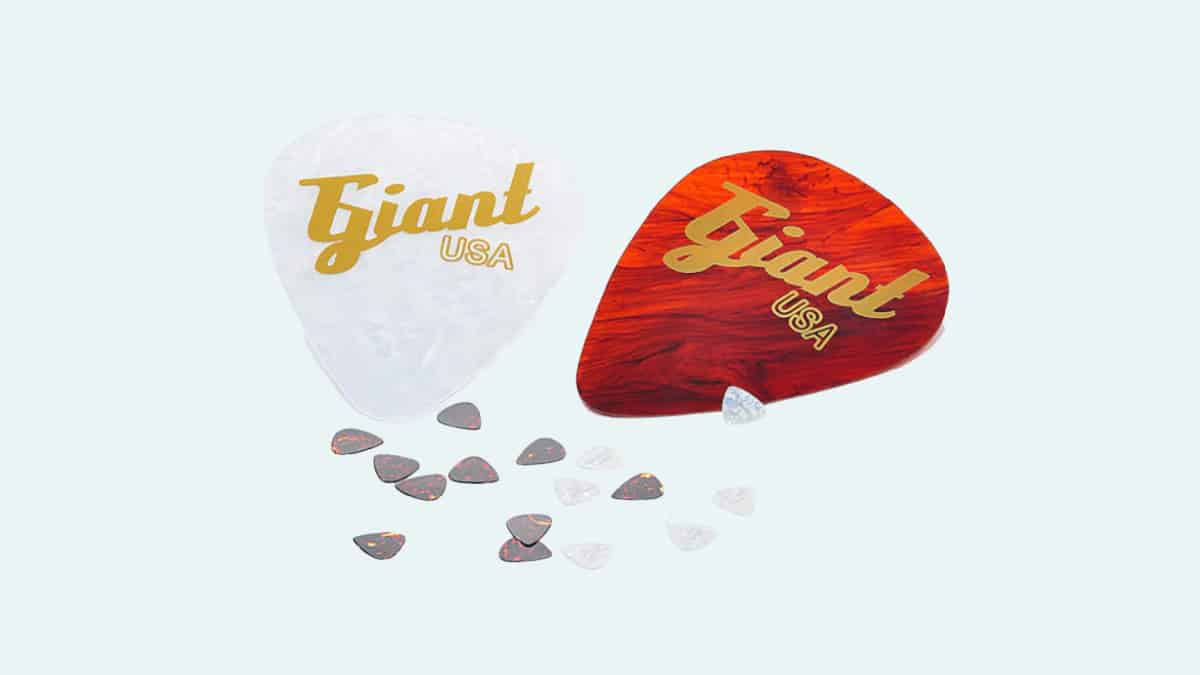We guitarists love buying guitar accessories. Almost as much as we love buying new guitars! Pedals, straps, cables, polish…
But what about guitar picks?
I have an extensive collection. I’ve experimented with them over time, and I’ve found that I gravitate towards larger picks. My small hands can grip them better.
Have you considered experimenting a bit with different sized picks? The guitar pick you choose can make a big difference to your playing.
Today I’ll go over 3 benefits of big guitar picks in case you’re looking for something easier to play with.
Let’s dive in.
Guitar Pick “Size”, versus Shape & Thickness
It’s important to note that size, shape, and thickness (or gauge) are distinctly separate things when we’re talking about guitar picks.
The words light, medium, and heavy refer to the thickness. Teardrop, triangular, stubby, sharkfin, or standard refer to shape. Small, medium, and big obviously are about size.
Size vs Thickness
If you search for “big guitar picks”, you’ll probably find a lot of people talking about thick picks.
If grip strength is an issue for you, a thicker pick could help. There are also many implications for tone and playability. If you play a guitar with thicker strings, you may want to consider using a thicker pick.
But we aren’t talking about thick picks today. We’re talking about size – small, standard, or large.
Guitar Pick Sizes Explained
Go into any music store and you’ll find guitar picks in a standard teardrop shape and size, like this:
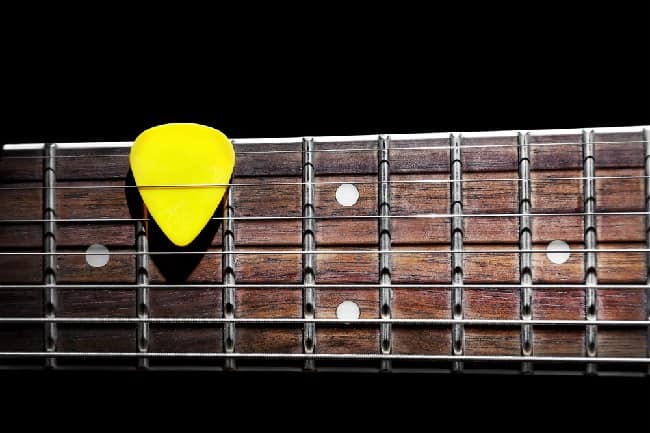
That’s the most common size.
A standard pick is what most beginners will start off with. Many will keep playing with it as they progress.
Jazz picks are often smaller and more pointed. They’re designed for precision, but can be more difficult to grip. They’re also harder to strum with, as you have less material available to strum freely with.
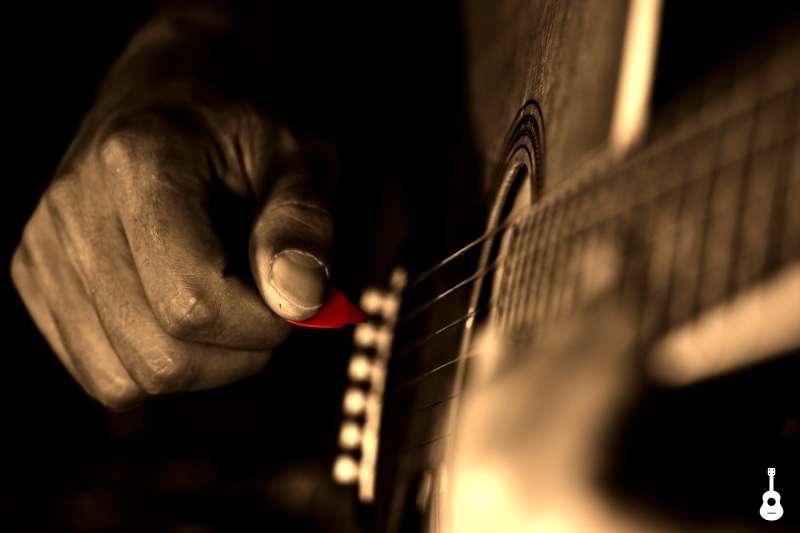
Then you have big guitar picks. These are usually triangular or close to it. Some have pointed corners, while others are rounded.
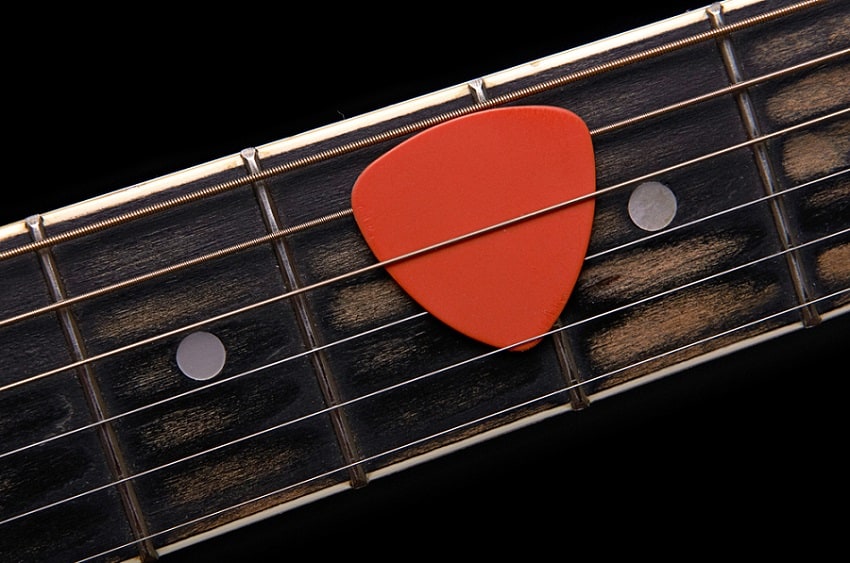
But which is best?
Ultimately, it depends on the hand holding it.
Why Choosing the Right Size Pick is Important
Generally, material and thickness are considered more important. You should definitely think about those factors when choosing your perfect pick. Or you can go for a more quirky alternative to a guitar pick.
But size does matter!
Using the wrong size pick for your hand can lead to fatigue and cramping in your hand or wrist. Gripping the pick extra hard can also reduce your mobility along the fretboard.
Keep reading to find out why I personally like big guitar picks, and why you should consider trying them.
3 Benefits of Big Guitar Picks
Interested in trying a larger pick? What benefits of big guitar picks can you expect to experience if you do?
Here are three noticeable benefits of big guitar picks that can make a difference to your playing.
1. Big Picks are More Durable
When you play, the tip of the pick wears away just a little every time it hits the strings. If you play often and hard, you can expect your picks to wear out relatively quickly.
Big triangular-shaped picks have an advantage over others. They have three tips!
You can switch between tips when playing, and they’ll wear down slower than usual. Or, you can use just one tip until it wears down and then move to the next one.
2. Big Picks are Easy to Hold
Big guitar picks have more surface area than standard ones. This means you can get a real good grip on it and still leave enough of the pick sticking out of your fingers.
Being able to grip the pick harder also means there’s less chance of dropping it. It also won’t rotate in your fingers as easily as smaller ones. So you won’t have to readjust it as often.
A big guitar pick could help if you often accidentally touch the strings with the other fingers on your strumming hand. More pick material means you can keep your fingers farther away from the strings.
Big picks are also useful for those who play guitar with long nails. More surface area means it’s easier to keep your fingernail out of the way.
3. Big Picks Give a Warm Sound
Big guitar picks often have blunt tips. Sometimes they’re quite rounded. Other times they’re pointed, but still more blunt than standard picks.
This creates a warm tone when you strum. It’s less noticeable when soloing. But it’s definitely a key factor when you’re learning beginner guitar songs or practicing strumming.
If you’re used to a standard pick, a larger one may feel awkward at first. You’ll need to practice a bit with it in order for strumming and picking to feel natural.
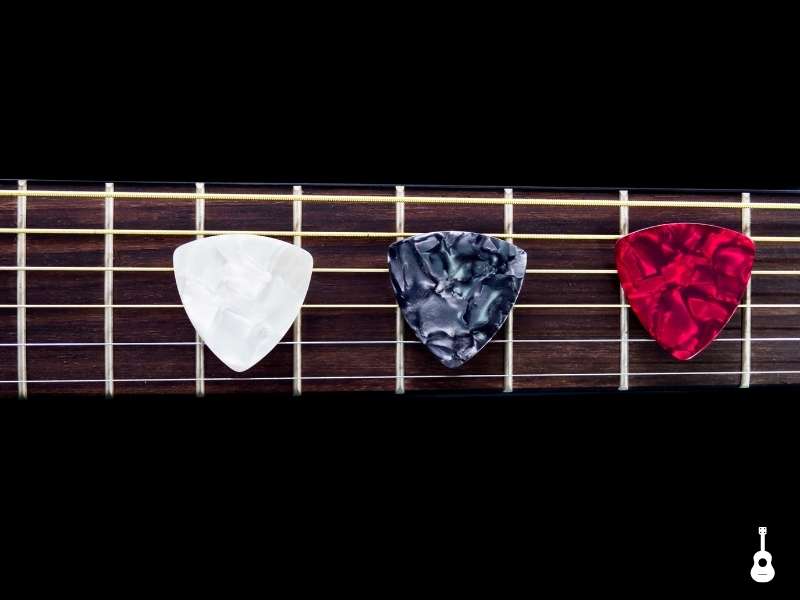
Is a Big Guitar Pick Right for You?
Big guitar picks have some distinct advantages. But they’re not for everyone!
If you’re wondering if they’ll be a good fit for you, here’s a quick guide to help you decide:
Choose Big Guitar Picks If:
Big guitar picks may be a good choice for you if you:
- Have big hands
- Play bass
- Struggle to hold a standard pick comfortably
- Have long nails on your strumming hand but still want to use a pick
- Accidentally touch the strings with your other fingers often
- Play a lot of chords (open or barre)
- Aren’t going to be speed picking
- Are still learning strumming patterns and chords
- Drop your pick often
Keep in mind that even if you do want to play super fast or shred wild solos, you can still try a big guitar pick. They aren’t as easy to move around as smaller ones, but they can still do a good job.
Choose Small Guitar Picks If:
As I said, big guitar picks aren’t for everyone. A standard or small guitar pick may be better for you if you:
- Play jazz, heavy metal (perhaps with a baritone guitar), or very precise guitar
- Want to do sweep picking or play fast solos
- Have small hands
- Have good grip strength
- Switch between strumming and finger-picking often
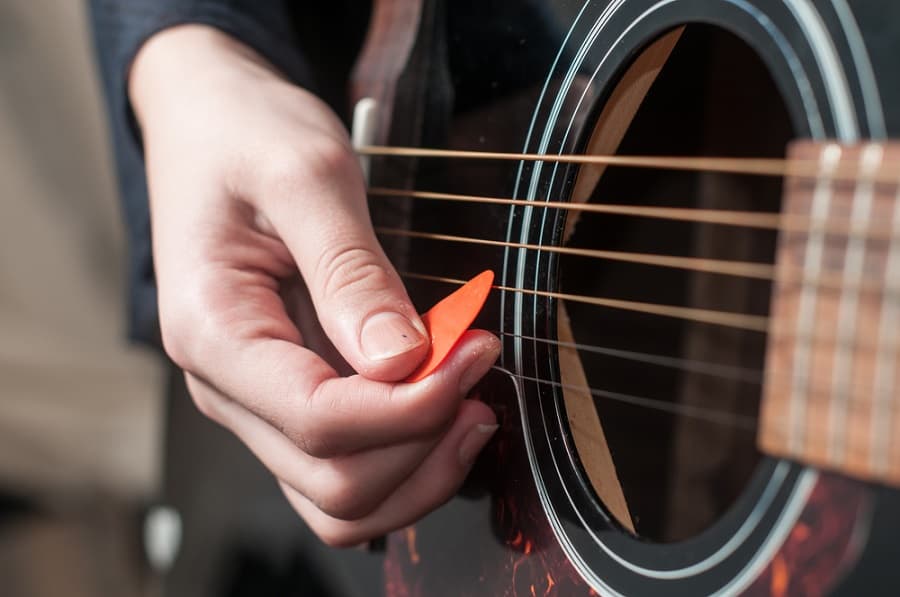
Conclusion
There are some definite benefits of big guitar picks, when compared to standard ones.
But in the end, it’s all about what feels right in your hand.
Guitarists looking for speed may find big guitar picks heavy and uncomfortable. Those who prefer strumming or heavy, chunky riffing might like a larger pick.
I recommend buying a pick in every size (and thickness, and material) and experimenting. That’s the best way to find out what really works for you!
Thanks for reading!

